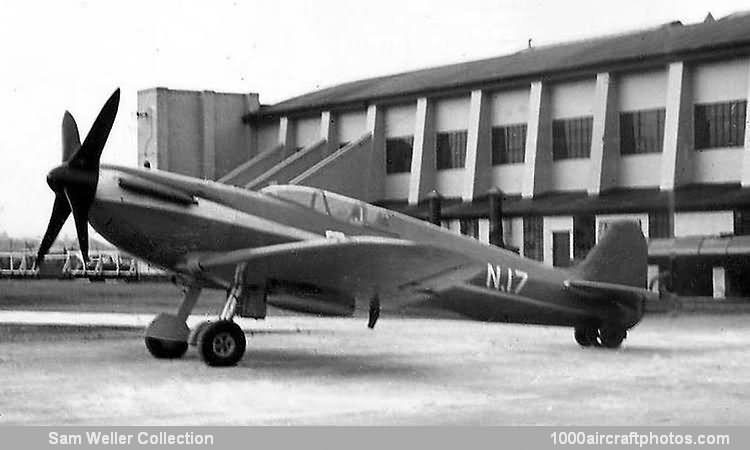10/31/2010. Remarks by Johan Visschedijk: "In the early stage of its construction of the 48th Spitfire F.Mk.I (serial K9834) was selected for modification to the High Speed Spitfire for an attempt on the World's Air Speed Record in 1938. Redesignated Type 323 the aircraft was finished under contract 817241/38, it had a reduced wing span of 33 ft 8 in (10.26 m), a streamlined cockpit, flush riveting, and a high-gloss finish to improve performance. Further modifications were a larger radiator and oil cooler, and the standard tail wheel was replaced by a skid. Power plant was a 2,160 hp Rolls-Royce Merlin 3M driving a four-blade, fixed-pitch propeller.
Registered in the 'Class B' as N-17, it was first flown by J. 'Mutt' Summers on November 11, 1938. It was hoped that N-17 would achieve 420 mph (676 kmh), but before an attempt could be made the World's Air Speed Record was broken on March 30, 1939, by a Messerschmitt Bf 109 R flown by Hans Dieterle at a speed of 469.22 mph (755.12 kmh). Further work on N-17 as a potential record-breaker was abandoned. Much, however, was learnt about high-speed flight from these efforts with regard to the problems of engine-cooling at high speeds, and N-17 also tested various airscrews such the de Havilland three-blade, controllable-pitch propeller.
N-17 was returned to its original identity of K9834 and standard construction and for a time was used for communications duties. Later the aircraft went to Benson where became one of the first Photo Reconnaissance machines, being fitted with an F.24 camera and a Merlin XI engine. Performance was not satisfactory and the machine was completely rebuilt by Heston Aircraft Ltd. who brought it up to Mk.II standard with a new cockpit, engine-driven hydraulics and fire-proof bulkhead. However, the limited fuel short wings and no guns made it unsuitable for operational service and it was used throughout the war as a high-speed hack. It was eventually scrapped in June 1946."
